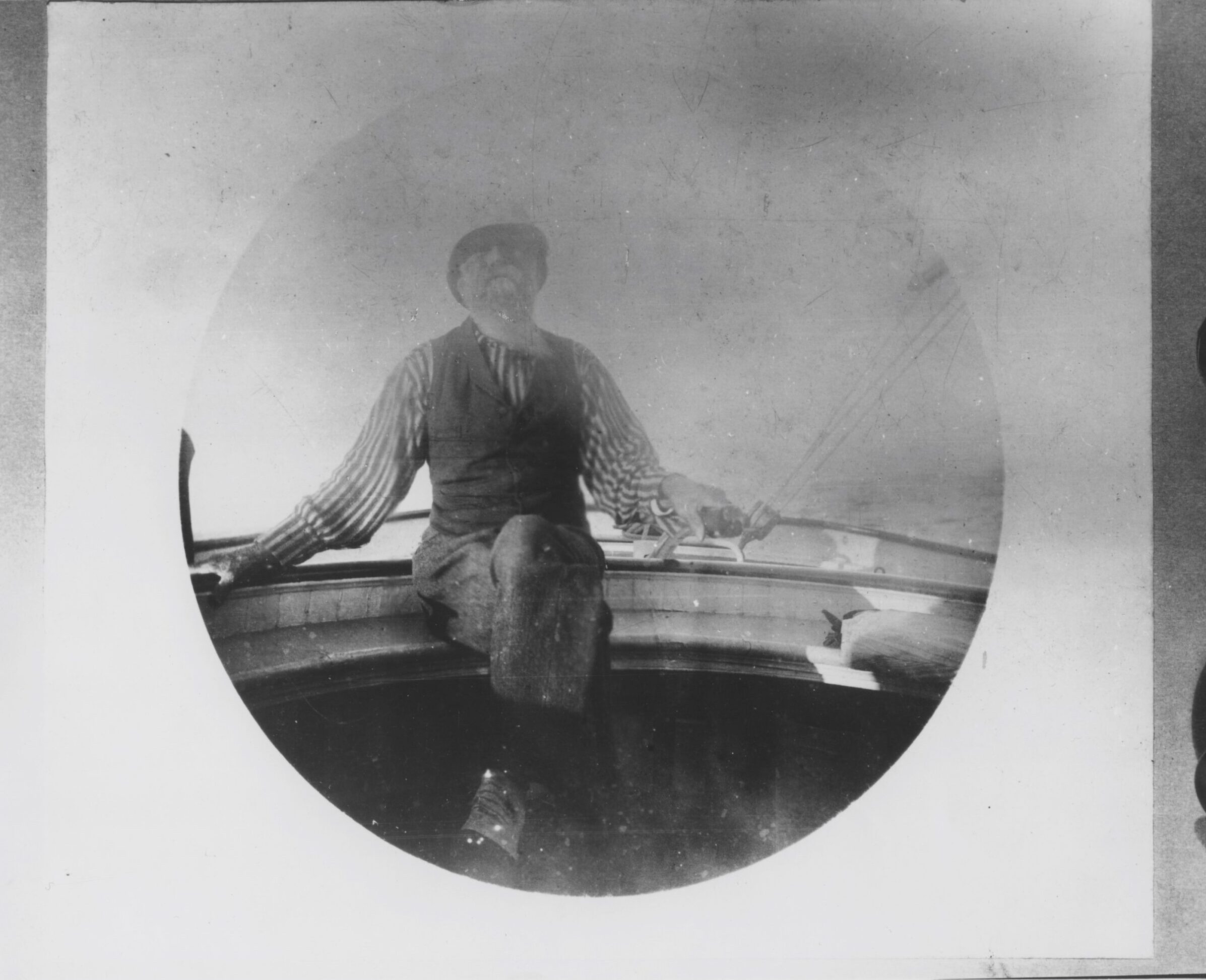
Captain Thomas Brewster Hawkins (1819–1901) was a distinguished American yachtsman, shipbuilder, and sea captain whose maritime career spanned more than seventy years. Born in Setauket, Long Island, New York, Hawkins began his life at sea at the age of sixteen, commanding a sloop named Portugal, owned by his father. He soon undertook trading voyages between Port Jefferson and various cities across the Northeast, cultivating a deep and enduring connection to the sea.
In 1850, Hawkins, alongside his brother-in-law John Mather, helped establish the yacht-building industry in Port Jefferson. His first major project, a 60-ton sloop named Irene, was launched in 1852 and quickly gained acclaim for its exceptional speed. Hawkins would go on to design, build, and supervise the construction of several notable vessels, including the Wanderer, a 246-ton schooner regarded as the largest and fastest yacht of its time. Tragically, the Wandererwould later gain infamy for its involvement in the illegal transatlantic slave trade. He also constructed the Corypheus, a nimble 90-ton schooner, that was seized by the U.S. government and repurposed for use during the Civil War, as was the Wanderer.
Captain Hawkins was widely respected for his innovations in yacht design and shipbuilding, as well as for his seamanship. Throughout his life, he remained a prominent figure in the maritime world. Reflecting on his passion for the ocean, he once remarked, “You landlubbers don’t know a sailor’s love for the sea. The ground you build your houses on is merely a platform, but the sea has a life, a personality, a being of its own.”
Hawkins passed away in 1901, leaving behind a profound legacy in American yachting and shipbuilding. Today, Mystic Seaport Museum preserves several of his personal belongings, honoring his enduring contributions to maritime history.
Vessels Built by Capt. Thomas B. Hawkins
IRENE – 1852 60-ton sloop
WANDERER – 1857 246-ton fore-and-aft schooner-yacht for J. D. Johnson of NY
CORYPHEUS – 1858 90-ton schooner for Milliken & Story of New Orleans
LAPWING – 1861 (owned by Capt. Hawkins for 2 years before selling)
HALEYON – for John Hubbard of NY
Built many trade vessels as well
Supervised the building
FLEETWING – 1865 230-ton for George Osgood, Vanderbilts son-in-law
(All vessels were noted in an interview with Captain Thomas B. Hawkins circa 1881 titled, “An Old Sailor’s Story: A Talk of the Sea and of Yachting”)